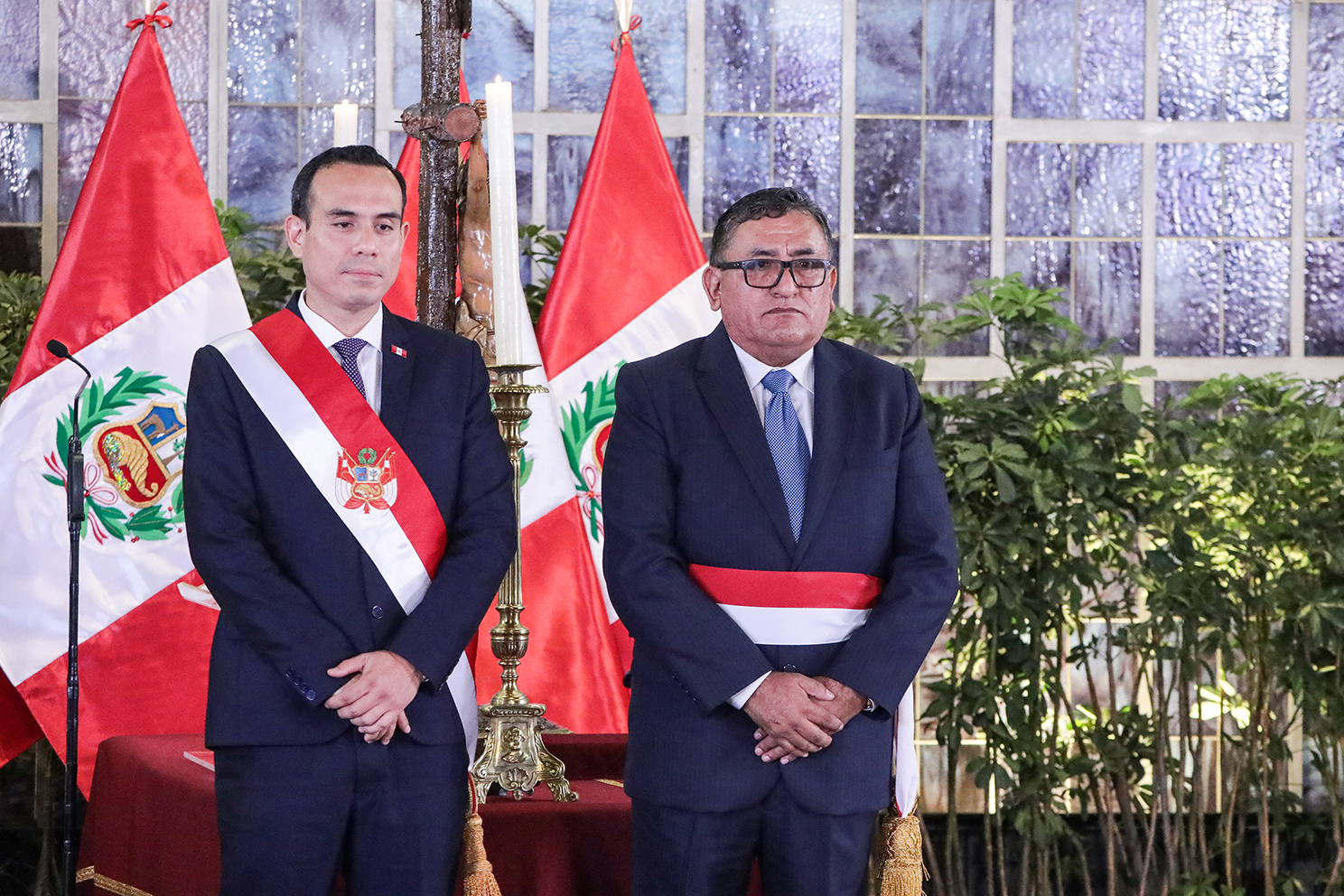World
Peru’s President Defies Calls to Resign After Deadly Protests

Peru’s newly inaugurated President José Jerí has firmly rejected calls for his resignation following a protest that resulted in one death and over 100 injuries. The unrest, largely driven by Gen Z activists, has intensified as demonstrators demand better governance and improvements in living conditions.
The protest took place in Lima, where authorities reported that at least 100 people were injured, including 80 police officers and 10 journalists. The violence erupted during a demonstration organized by young activists advocating for better pensions and wages. During the rally, a 32-year-old protester, Eduardo Ruíz, was fatally shot. Following the incident, Jerí expressed his commitment to maintain national stability and announced plans to request enhanced powers to combat crime.
Investigation Underway
The Peruvian prosecutor’s office has initiated an investigation into Ruíz’s death. In a statement on social media platform X, authorities confirmed that they are collecting evidence related to the shooting, which they described as part of serious human rights violations. Video footage shows Ruíz collapsing on a Lima street after being shot by a fleeing man, who witnesses suggested was a plainclothes police officer.
In addition to Ruíz’s death, the protests have led to injuries among both demonstrators and law enforcement. According to the Ombudsman’s Office, at least 24 protesters and 80 police officers sustained injuries during the unrest. The National Association of Journalists reported that six journalists were injured by projectiles and four were assaulted by police.
Jerí expressed his sorrow over the loss of life but maintained his position against resigning. “My responsibility is to maintain the stability of the country; that is my responsibility and my commitment,” he stated after a visit to Peru’s Parliament.
Widespread Discontent
The protests in Peru are part of a broader global trend of youth-led demonstrations against perceived government failures. Similar protests have erupted in countries such as Nepal, the Philippines, and Morocco, often marked by the use of symbols such as black flags associated with popular culture.
In Lima’s main plaza, 27-year-old electrician David Tafur joined the protests after discovering them on TikTok. “We’re fighting for the same thing — against the corrupt — who here are also killers,” he commented, alluding to the violent protests in 2022 that resulted in numerous fatalities.
The protests intensified shortly after the ousting of former President Dina Boluarte, who faced criticism for her handling of social unrest and crime. Jerí, who took office on October 10, 2023, has promised to address ongoing issues, including a recent wave of crime. In a significant move, he appointed Ernesto Álvarez, a controversial ultraconservative former judge, as prime minister.
Criticism of Jerí has emerged due to his previous legal troubles, including accusations of sexual assault that were dismissed by the prosecutor’s office earlier this year. His past legislative votes, which many argue weakened the fight against crime, have further fueled protests demanding accountability and reform.
During the demonstrations, protesters chanted slogans accusing Jerí of being a rapist, employing local slang to emphasize their anger. Tensions escalated as protesters launched fireworks at police, who responded with tear gas and rubber pellets.
Social discontent in Peru has been building for decades, characterized by widespread corruption and ineffective governance. According to Omar Coronel, a sociology professor at the Pontifical Catholic University of Peru, the issues surrounding pensions and crime have exacerbated frustrations among the population.
Signs at the protests highlighted the deep-seated anger among citizens, with messages reading, “Protesting is a right, killing is a crime.” One woman carried a poster that criticized the change in leadership, stating, “From a murderess to a rapist, the same filth.”
The ongoing unrest reflects a generation’s outrage over perceived abuses of power and corruption, signaling a critical moment in Peru’s political landscape as citizens demand accountability and change.
-

 Science2 months ago
Science2 months agoInventor Achieves Breakthrough with 2 Billion FPS Laser Video
-

 Health2 months ago
Health2 months agoCommunity Unites for 7th Annual Into the Light Walk for Mental Health
-

 Top Stories2 months ago
Top Stories2 months agoCharlie Sheen’s New Romance: ‘Glowing’ with Younger Partner
-

 Entertainment2 months ago
Entertainment2 months agoDua Lipa Aces GCSE Spanish, Sparks Super Bowl Buzz with Fans
-

 Health2 months ago
Health2 months agoCurium Group, PeptiDream, and PDRadiopharma Launch Key Cancer Trial
-

 Top Stories2 months ago
Top Stories2 months agoFormer Mozilla CMO Launches AI-Driven Cannabis Cocktail Brand Fast
-

 Entertainment2 months ago
Entertainment2 months agoMother Fights to Reunite with Children After Kidnapping in New Drama
-

 World2 months ago
World2 months agoR&B Icon D’Angelo Dies at 51, Leaving Lasting Legacy
-

 World2 months ago
World2 months agoIsrael Reopens Rafah Crossing After Hostage Remains Returned
-

 Business2 months ago
Business2 months agoTyler Technologies Set to Reveal Q3 Earnings on October 22
-

 Health2 months ago
Health2 months agoNorth Carolina’s Biotech Boom: Billions in New Investments
-

 Health2 months ago
Health2 months agoYouTube Launches New Mental Health Tools for Teen Users









